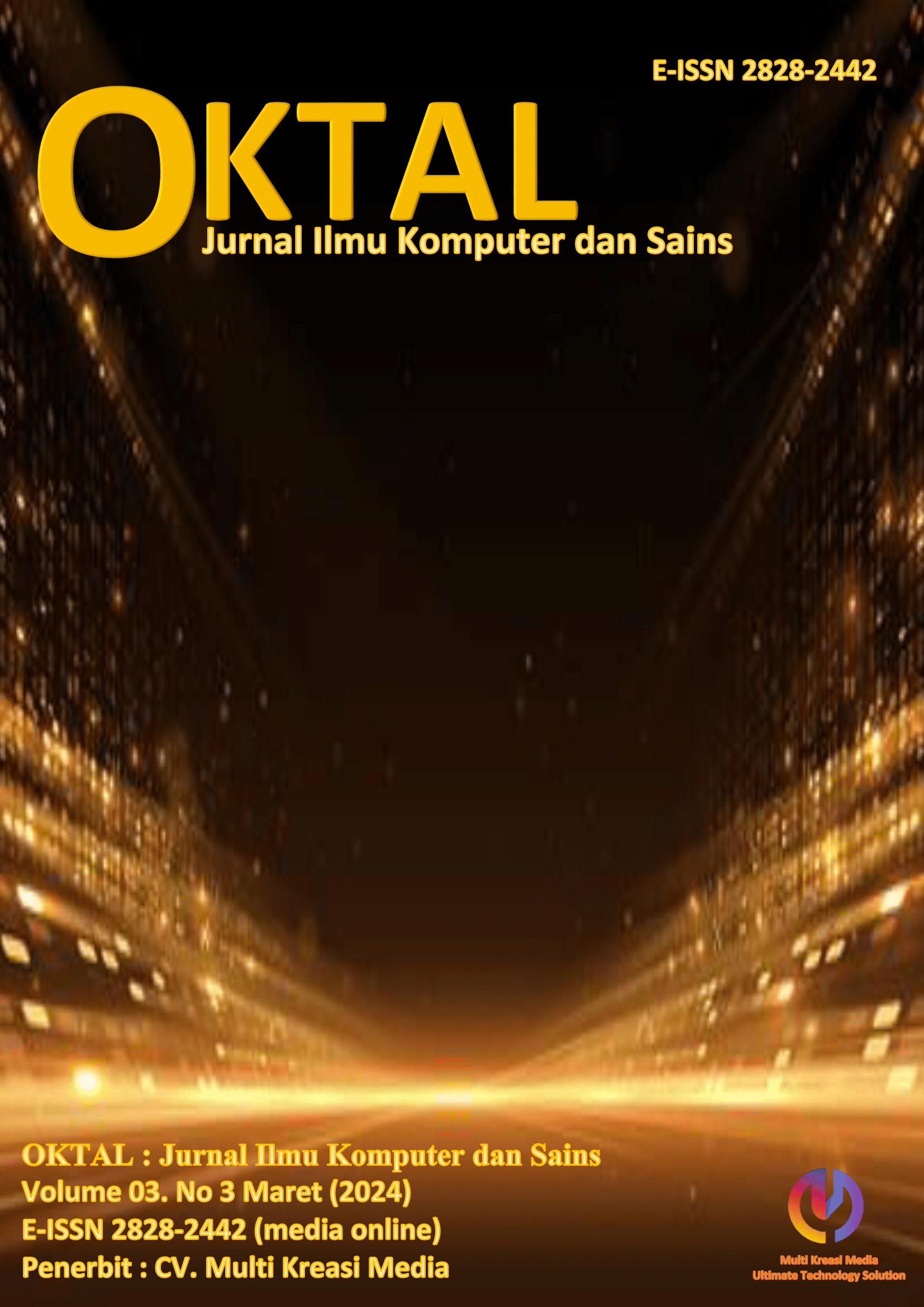Implementation of a Classification System for Selection of Tender Winners Using the ANN (Artificial Neural Network) Method
Keywords:
Tender Winning Selection System, Classification, Artificial Neural NetworksAbstract
Tender is a series of bidding activities that aim to select, obtain, determine and show which company is the most appropriate and appropriate to work on a work package. The tender is divided into several parts. In the Selection of Tender Participants, it is carried out through Evaluation stages such as Administration, Technical, Price, Qualification and Final Value. The problem is that in carrying out the classification for this selection requires a system that can classify bidders who pass the selection and those who do not pass the tender selection, and the results of its implementation. The method currently used is still ineffective because it is prone to human error, such as inputting the results of recaps from each selection stage into the final evaluation result which causes differences in the results, and difficulties in classifying participants who pass the selection and do not pass the tender selection. To overcome this problem, the authors developed a classification system for tender selection using the Artificial Neural Network method which relies on neurons to carry out classification so that it can select participants who pass the tender and do not pass the tender. From the test results, the accuracy levels for Data Training and Data Testing were 99.15% and 98.04% and the evaluation results from the Accuracy metrics were 97.20%, Precision, Recall and F1-Score were 97.00%
References
Aryaguna, A. A., & Anggriawan, D. O. (2021, April). Identifikasi Jenis Gangguan Pada Jaringan Distribusi Menggunakan Metode Artificial Neural Network. JURNAL INOVTEK SERI ELEKTRO, VOL. 3, NO. 1, 27-35.
Dermawan, S., Santoso, E., & Muflikhah, L. (2018). Penentuan Pemenang Tender Menggunakan Kombinasi K-Neareast Neighbor dan Cosine Similarity (Studi Kasus PT. Unichem Candi Indonesia). Jurnal Pengembangan Teknologi Informasi dan Ilmu Komputer, 2, 1986-1990.
Fine, T. L. (1999). Feedforward Neural Network Methodology. New York, United States: Springer.
Firdausa, F. (2019, Oktober). PREDIKSI DAN ANALISIS DATA GEMPA BUMI DI PROVINSI BENGKULU DENGAN METODE ARTIFICIAL NEURAL NETWORK. Cantilever, 8, 45-49.
Géron, A. (2019). Hands-On Machine Learning with Scikit-Learn, Keras, and TensorFlow - Concepts, Tools, and Techniques to Build Intelligent Systems, 2nd Edition (2nd Edition ed.). (R. R. Tache, Ed.) 1005 Gravenstein Highway North,Sebastopol, CA 95472, California, United States: O’Reilly Media, Inc.
Kumar, R. (2019). Machine Learning Quick Reference (1st Edition ed.). (S. Editing, Ed.) Birmingham, United Kingdom: Packt Publishing.
Kurniawansyah, A. S. (2018, Februari 1). IMPLEMENTASI METODE ARTIFICIAL NEURAL NETWORK DALAM MEMPREDIKSI HASIl UJIAN KOMPETENSI KEBIDANAN (STUDI KASUS: AKADEMI KEBIDANAN DEHASEN BENGKULU). Jurnal Pseudocode, Volume V Nomor 1, 37-44. Retrieved from www.ejournal.unib.ac.id/index.php/pseudocode
Nasri. (2011). SISTEM PENDUKUNG KEPUTUSAN SELEKSI PENENTUAN PEMENANG TENDER MENGGUNAKAN METODE PROMETHEE. 122.
Ningsih, R. Y., & Andreswari, D. (2019, November 2). Sistem Pendukung Keputusan Penentuan Pemenang Tender Proyek Menggunakan Metode Multi Factor Evaluation Process (MFEP) (Studi Kasus: Dinas Pekerjaan Umum Dan Perumahan Rakyat Provinsi Bengkulu). Ejournal Unib, Vol 7. No 2, 144-154. Retrieved from http://ejournal.unib.ac.id/index.php/rekursif/
Nur, H., Novitasari, B. H., & Ami, R. (2019). KLASIFIKASI PEMINJAMAN NASABAH BANK MENGGUNAKAN METODE NEURAL NETWORK. Jurnal PILAR Nusa Mandiri Vol. 15, No. 2 September 2019, 15, 163-170




















